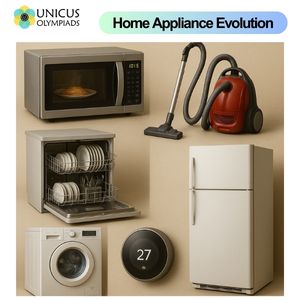

Tools like microwaves and vacuum cleaners have evolved significantly since their inception. These everyday appliances have become integral parts of modern homes, making life easier, faster, and more efficient. Their evolution reflects technological advances in materials, energy efficiency, and user convenience. Below is an exploration of the development of microwaves and vacuum cleaners, their inventors, and how they have transformed over time.
The microwave oven revolutionized cooking by allowing food to be heated quickly using microwave radiation, a technology originally developed for military use during World War II.

The vacuum cleaner is another essential tool that has evolved significantly, transforming the way we clean homes and workplaces. The invention of the vacuum cleaner was a key step in automating household cleaning tasks.
The dishwasher has revolutionized kitchen cleaning by automating the process of washing dishes, saving time and water.
The electric refrigerator has transformed food storage, making it safer and more convenient to preserve perishable foods.
The washing machine has been instrumental in reducing the time and labor required for laundry, improving convenience in household chores.
The smart thermostat allows users to control their home's temperature remotely, optimizing energy use and enhancing comfort and efficiency.